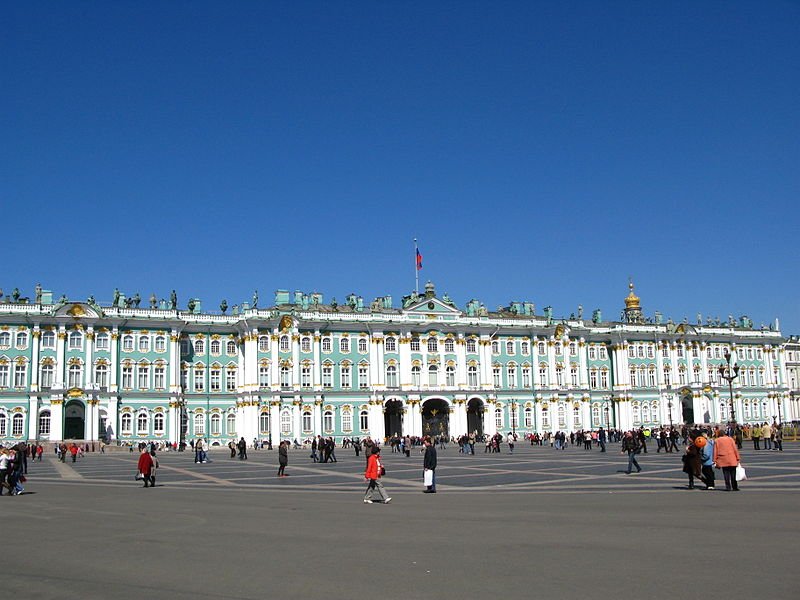 Winter Palace, Hermitage Museum complex, Saint Petersburg
Winter Palace, Hermitage Museum complex, Saint PetersburgSource: https://commons.wikimedia.org/wiki/File:Ermita%C5%BE.JPG
Author: PetarM

Saint Petersburg (Russian: Санкт-Петербург) is the second largest city in Russia. It covers 605.8 sq km (233.9 sq mi). Together with nine municipal towns and twenty-one municipal settlements, the federal subject of Saint Petersburg covers a total of 1,439 sq km (555.6 sq mi). With a population of 4.8 million people (2011 estimate), Saint Petersburg is the northernmost city in the world with a population exceeding a million. It is renowned for its cultural heritage, and is home to the largest art museum in the world. It is also regarded as the most Western of all the cities in Russia.
Saint Petersburg on Google Maps Street View
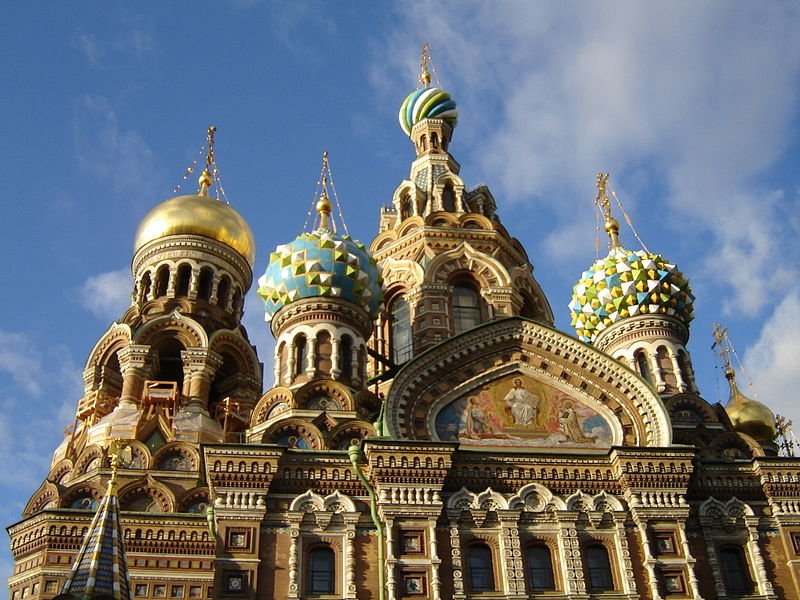 Church of the Savior on Blood, Saint Petersburg
Church of the Savior on Blood, Saint PetersburgSource: https://commons.wikimedia.org/wiki/File:Church_of_the_Savior_on_Blood2.JPG
Author: RussianSpy

Saint Petersburg is located in the middle of the forested lowlands in the delta of the River Neva, where it empties into Neva Bay in the Gulf of Finland. The city itself is on islands in the delta. The highest point in the city is Orekhovaya Hill, at 175.9 m (577 ft) above sea level.
Saint Petersburg is often compared to Venice for its numerous canals. And similar to Venice, it too is plagued by frequent flooding, as much of its western neighbourhoods are less than 4 meters (13 ft) above sea level. Since the 18th century, much effort is invested to raise the city and keep it dry.
Saint Petersburg is on the Moscow Time Zone, which is four hours ahead of Coordinated Universal Time (UTC+4). Located at a latitude of 60°N, Saint Petersburg is one of the cities that experiences white nights, between mid-May to mid-July. The city has a humid continental climate. Summers here are brief and warm while winters cold and long. From December to March, the River Neva remains frozen, with the city gets an average of 123 days of snow, the heaviest being February.
Saint Petersburg was founded by the Russian ruler Peter the Great. After he captured the Swedish fortress of Nyenskans on 12 May, 1703, he erected the Peter and Paul Fortress there. The fortress became the first brick structure of his new city. The city was named after Peter the Great's namesake, the Apostle Peter, or Saint Peter, whose name day according to the Russian Orthodox Church falls on 29 June.
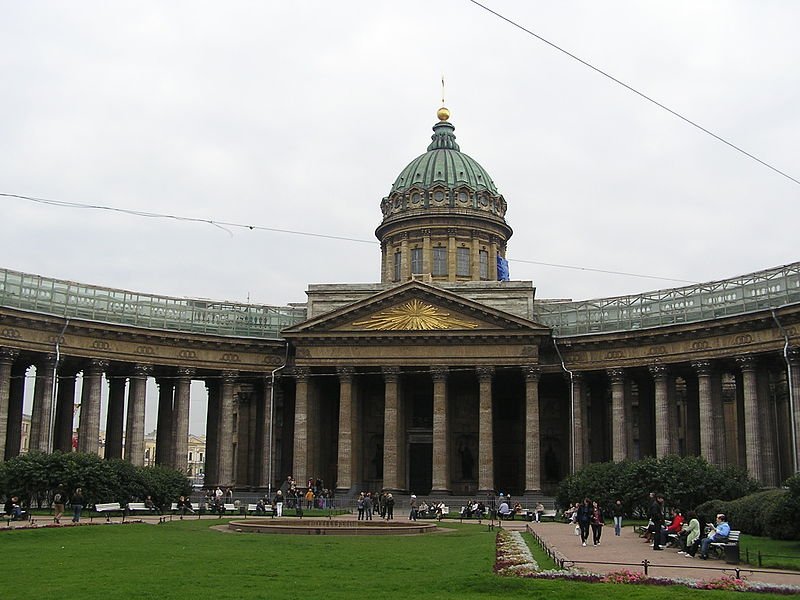 Kazan Cathedral, Saint Petersburg
Kazan Cathedral, Saint PetersburgSource: https://commons.wikimedia.org/wiki/File:%D0%9A%D0%B0%D0%B7%D0%B0%D0%BD%D1%81%D0%BA%D0%B8%D0%B9_%D1%81%D0%BE%D0%B1%D0%BE%D1%80_026.jpg
Author: Andrew Butko

In the 1830's, Alexander Pushkin began calling the city Petrograd. Tzar Nicholas II made it official in 1914. The change from Sankt-Peterburg to Petrograd effectively changed the eponym of the city from the Apostle Peter to Peter the Great. Following the Bolshevik Revolution of 25 October 1917, the city was known as Красный Петроград (Red Petrograd) until 1924, when it underwent another name change, this time to Leningrad.
After the Soviet Union collapsed, a referendum was held on 12 June, 1991, on whether the name should remain Leningrad or should it revert back to Sankt-Peterburg (Санкт-Петербург). Petrograd was not an option in the referendum, which saw Sankt-Peterburg selected by 54.86% of the votes.
The city of Saint Petersburg is today a federal city headed by a governor, the position of which was held by Valentina Ivanovna Matviyenko since 2003.
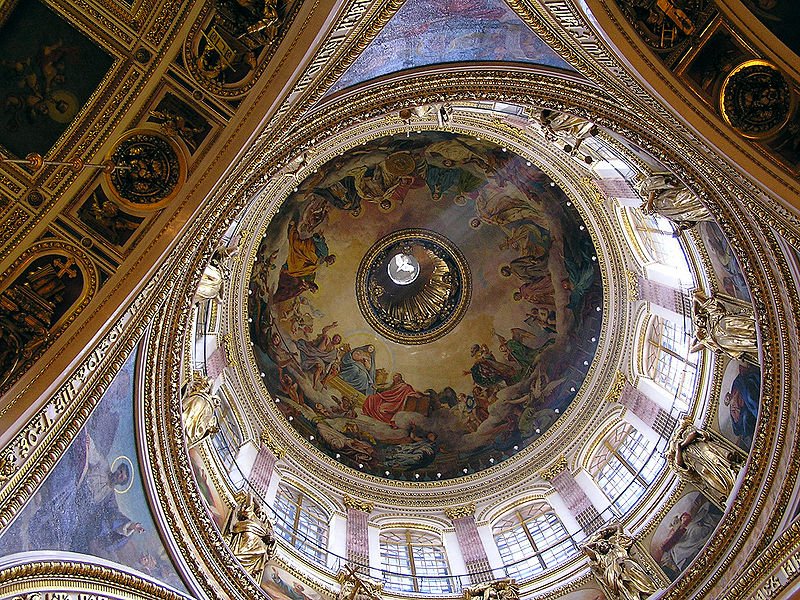 Dome of Saint Isaac's Cathedral, Saint Petersburg
Dome of Saint Isaac's Cathedral, Saint PetersburgSource: https://commons.wikimedia.org/wiki/File:St_Isaacs_Dome_Russia.jpg
Author: D. Alyoshin

Saint Petersburg is today a major tourist destination, drawing visitors to admire its Baroque and neoclassical buildings which are some of the best preserved in Russia. The Historic Centre of Saint Petersburg and Related Group of Monuments is a World Heritage Site inscription for the inner city of Saint Petersburg and Leningrad Oblast since 1991.
Visiting Saint Petersburg
The Pulkovo Airport (LED) is the international airport serving Saint Petersburg. It has two terminals, with Terminal 2 exclusively for international flights. Arriving at Pulkovo Airport, you can get a taxi to downtown Saint Petersburg 17 km away. You can book your taxi from the taxi counter at the Arrival Hall. The fare to the central district of Saint Petersburg is a fixed 600 RUB.Exploring Saint Petersburg
The Saint Petersburg subway is the second largest in Russia. It provides the cheapest means of getting around. Many of the stations are highly ornamented, becoming themselves tourist attractions. The fare is a flat rate of 25 rubles regardless distance traveled, paid using brass tokens that you can purchase at kiosks at the entrances to the station.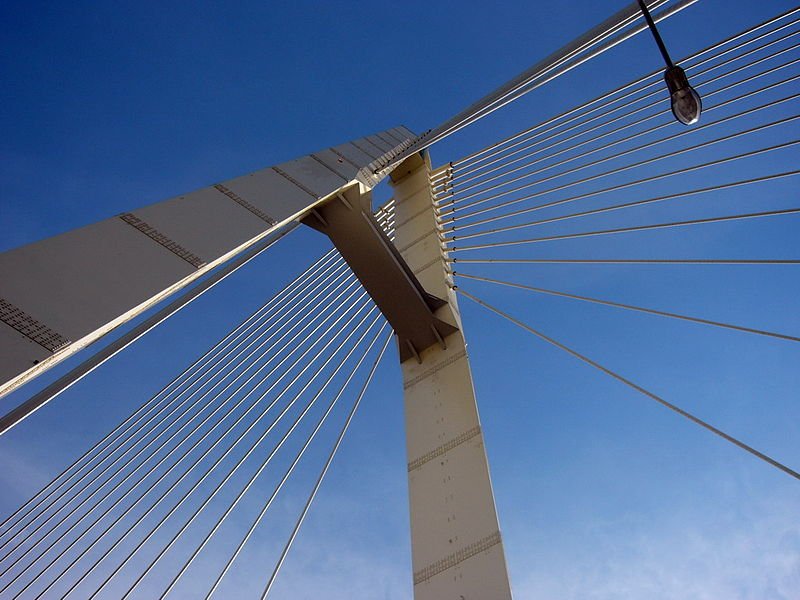 Big Obukhovsky Bridge, Saint Petersburg
Big Obukhovsky Bridge, Saint PetersburgSource: https://commons.wikimedia.org/wiki/File:Big_Obukhovsky_Bridge_2.jpg
Author: Evgeny Gerashchenko

Places of Interest in Saint Petersburg, Russia
- Admiralty Building
- Alexander Column
- Anichkov Palace
- Artillery Museum
- Beloselsky-Belozersky Palace
- Big Obuskhovsky Bridge
- Catholic Church of Saint Catherine
- Central Naval Museum
- Church of the Savior on Blood
- Griboyedov Canal
- Hermitage Museum
- Imperial Academy of Arts
- Kazan Cathedral
- Kunstkamera
- Lutheran Church of Saint Peter and Saint Paul
- Marble Palace
- Mariinsky Theatre
- Menshikov Palace
- Moika
- Old Saint Petersburg Stock Exchange
- Palace Bridge
- Palace Embankment
- Palace Square
- Peter and Paul Cathedral
- Peter and Paul Fortress
- Peter the Great Museum of Anthropology and Ethnography
- Railway Museum
- Russian Ethnography Museum
- Russian Museum
- Saint Isaac's Cathedral
- Saint Petersburg Botanical Garden
- Saint Petersburg Mosque
- Saint Petersburg Museum of History
- Saint Petersburg TV Tower
- Senate Square
- Stroganov Palace
- Summer Garden
- Tauride Palace
- Tikhvin Cemetery
- Twelve Collegia
- Winter Palace
- Zoological Museum
Municipal Towns of Saint Petersburg
- Kolpino
- Krasnoye Selo
- Kronstadt
- Lomonosov
- Pavlovsk
- Petergof
- Pushkin
- Sestroretsk
- Zelenogorsk
 Latest updates on Penang Travel Tips
Latest updates on Penang Travel Tips

Copyright © 2003-2025 Timothy Tye. All Rights Reserved.

 Go Back
Go Back